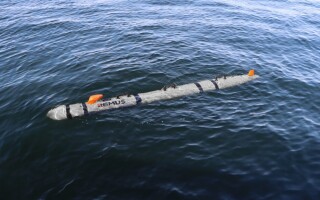DARPA's DREaM program aims to take next step in transistor technology
NewsMarch 21, 2017

ARLINGTON, Va. Defense Advanced Research Projects Agency (DARPA) officials will host a Proposers Day in support of the Dynamic Range-enhanced Electronics and Materials (DREaM) on March 29, 2017 in Arlington, Virginia. The program is designed to provide openings to path-breaking advances in transistor technology that generate and receive radio frequency (RF) and millimeter-wave signals?which are central in defense-relevant domains such as communications, signals intelligence, and electronic warfare (EW).
Dan Green, a program manager in DARPA’s Microsystems Technology Office (MTO) and the overseer of the DREaM program, says the goal is "that DREaM transistors will transmit and receive the large and complex RF signals of the future and they will do so in smaller packages while consuming minimal power.”
The strategic challenge for researchers who become part of the DREaM program, Green notes, will be to rail against the seemingly inescapable performance tradeoffs between four key characteristics of RF transistors:
- Signal power, which determines an RF system’s range of operation,
- Power efficiency, which determines the size and weight of the power system required to run them,
- The range of frequencies (bandwidth) in which the transistors work,
- The system’s so-called linearity, a measure of the fidelity at which a receiver can amplify signals, including weak ones that otherwise would get lost in the cocktail party of signals that a receiver’s amplifier is likely to process in a battlespace.
“The same basic transistor types have been dominant since their invention and we have been engineering the heck out of them for 50 years,” says Green. “We’ve gotten a lot out of that approach, but the focus on so few types of transistor technologies and just a few semiconductor materials also has fundamentally limited us in the RF world. With DREaM, we want to rethink all of that and imagine new possibilities.”
To achieve these technical goals with the DREaM program, Green hopes to push transistor technology forward along two mutually reinforcing directions. One centers on new materials that can accommodate more electrical charge and voltage without degrading than can currently known materials. Advances on this materials front could open the way to the higher-power and more capable transistors Green seeks to develop with the DREaM program. Ultrawide bandgap materials (UWB) such as complex oxides, which include gadolinium titanate and strontium titanate, and even particular crystal variants of GaN, are among the many possible candidates for research in this area. Researchers engaging in the second technical area, which focuses on the linearity of transistor behavior over wide ranges of signal frequencies, will investigate unconventional transistor structures, among them nonplanar and filamentous ones, such as ones based on carbon nanotubes, as well as still-to-be-imagined geometries and layouts that are not constrained by the row-and-column transistor formats of today’s integrated circuits.
The DREaM program is all about reducing the traditional limitations of this “trade space,” as Green refers to it, so that engineers will be able to design smaller, less power-needy RF systems that nonetheless operate at larger electromagnetic bandwidths with unprecedented linearity
The electromagnetic (EM) environment has an exponentially growing cacophony of RF and millimeter-wave signals (shorter-wavelength and higher-frequency signals than those in the RF range) from civilian and military devices, including everyday smartphones, long-range radars, and frequency-hopping RF jammers. The RF and millimeter-wave environment will become even more complex, noisy, and challenging to use. Transistors with unprecedented performance, especially in frequencies important for wireless communication, could become important parts of the solution to these challenges.
The programs at DARPA have laid down foundations for transistor technology based on the semiconductor materials gallium arsenide (GaAs) and gallium nitride (GaN), for example. Compared to silicon-based technology, the backbone substance of the microelectronics revolution, GaAs circuitry operates at the higher frequencies and signal amplification powers that have made practical a world connected by palm-sized cell phones. GaN circuitry can operate at yet higher powers and frequencies and have given the U.S. military an edge in electronic warfare by enabling its radars and jammers to work at greater distances than its adversaries’ corresponding technologies can.
Advanced registration is required for Proposers Day with a March 27 deadline to sign up. More information about the Proposers Day is available in a Special Notice (DARPA-SN-17-24) posted on fbo.gov (http://bit.ly/2nsyLlX). The DREaM program’s Broad Agency Announcement (HR001117S0024), which will more fully detail the technical goals and performer requirements, is expected to be released and posted on fbo.gov prior to the Proposers Day. To register: http://www.cvent.com/d/65qjvj.






